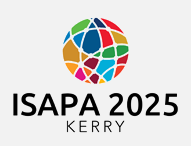Start Date
17-6-2025 9:00 AM
End Date
17-6-2025 10:30 AM
Abstract
Introduction: The purpose of this study was to examine the differences in PE teachers’ self-efficacy to teach students with disabilities across integrated and self-contained classes, as well as the association between efficacy-relevant information and PE teachers’ beliefs in their capabilities to teach across each placement.
Method: A total of 170 (105 females; 64 males; one undisclosed) in-service PE teachers in the US completed the Self-Efficacy to Teach Students with Disabilities Across Instructional Placements for Physical Education Scale (SETSD-IPPE) as well as a demographic questionnaire. Differences in self-efficacy between placements were tested using analyses of covariance, and associations between variables were explored via structural equation modeling.
Results: No significant differences were found between PE teachers’ self-efficacy to teach in an integrated placement compared to a self-contained placement. Further, no distinctions in self-efficacy were found among PE teachers with experience teaching in only integrated or self-contained placements. However, those with experiences in both placements reported a slightly higher self-efficacy to teach in a self-contained placement. Favorable efficacy-relevant information directly predicted PE teachers’ self-efficacy in both integrated and self-contained classes, however, unfavorable efficacy-relevant information had only an indirect prediction on self-efficacy with favorable efficacy-relevant information serving as a mediator.
Conclusion: Further research may consider exploring diverse methodological procedures aiming to further connect the impact of efficacy-relevant information on PE teachers’ self-efficacy across instructional placements to extend our understanding of why and how self-efficacy appears consistent across instructional settings.
Recommended Citation
Nowland, Lindsey and Haegele, Justin, "Physical Educators’ Self-Efficacy to Teach Students with Disabilities Across Instructional Placements" (2025). International Symposium of Adapted Physical Activity and International Symposium on Physical Activity and Visual Impairment and Deafblindness. 17.
https://sword.mtu.ie/isapa/2025/day2/17
Physical Educators’ Self-Efficacy to Teach Students with Disabilities Across Instructional Placements
Introduction: The purpose of this study was to examine the differences in PE teachers’ self-efficacy to teach students with disabilities across integrated and self-contained classes, as well as the association between efficacy-relevant information and PE teachers’ beliefs in their capabilities to teach across each placement.
Method: A total of 170 (105 females; 64 males; one undisclosed) in-service PE teachers in the US completed the Self-Efficacy to Teach Students with Disabilities Across Instructional Placements for Physical Education Scale (SETSD-IPPE) as well as a demographic questionnaire. Differences in self-efficacy between placements were tested using analyses of covariance, and associations between variables were explored via structural equation modeling.
Results: No significant differences were found between PE teachers’ self-efficacy to teach in an integrated placement compared to a self-contained placement. Further, no distinctions in self-efficacy were found among PE teachers with experience teaching in only integrated or self-contained placements. However, those with experiences in both placements reported a slightly higher self-efficacy to teach in a self-contained placement. Favorable efficacy-relevant information directly predicted PE teachers’ self-efficacy in both integrated and self-contained classes, however, unfavorable efficacy-relevant information had only an indirect prediction on self-efficacy with favorable efficacy-relevant information serving as a mediator.
Conclusion: Further research may consider exploring diverse methodological procedures aiming to further connect the impact of efficacy-relevant information on PE teachers’ self-efficacy across instructional placements to extend our understanding of why and how self-efficacy appears consistent across instructional settings.

